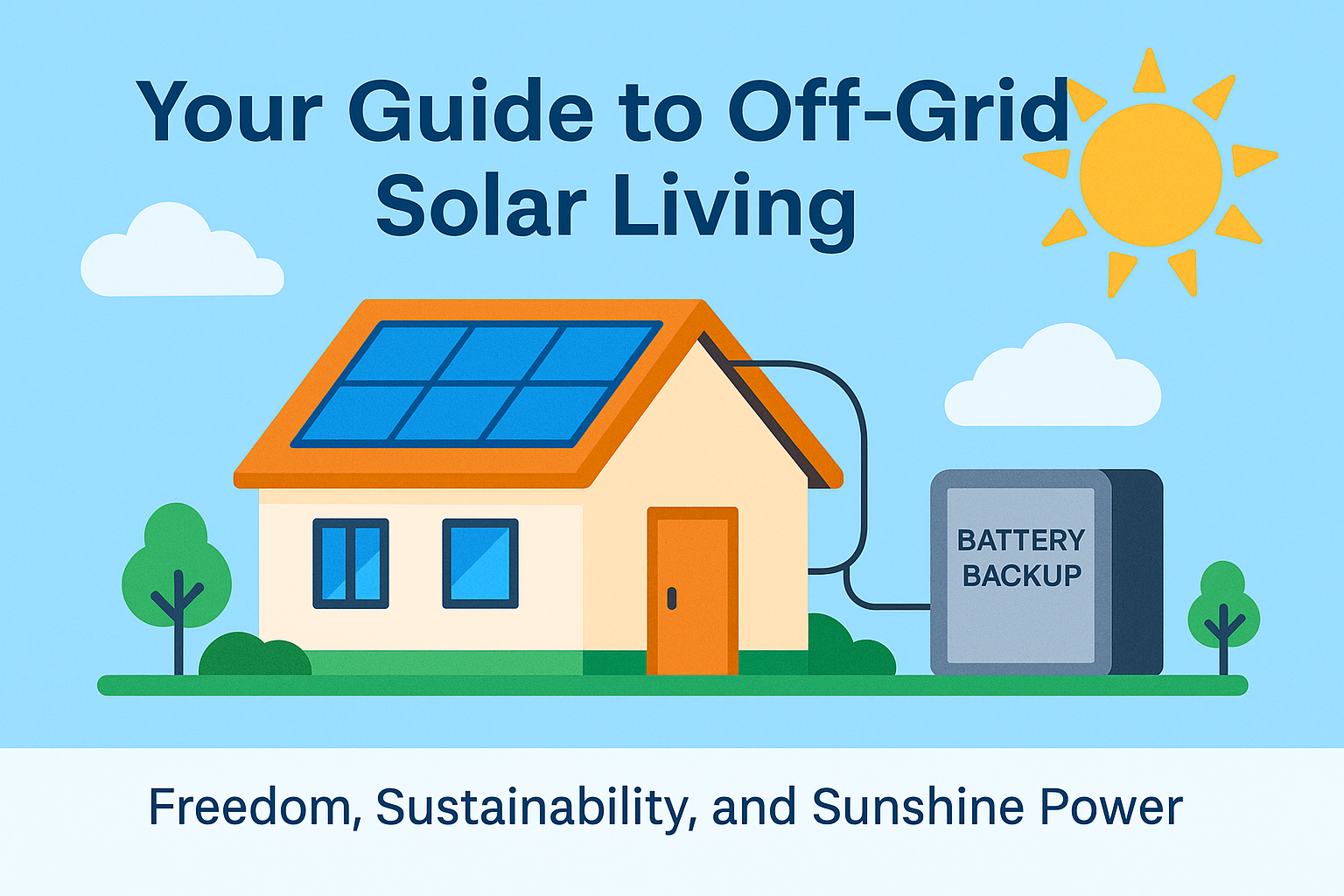Your cart is currently empty!
Tag: Offgrid

How Off-Grid Solar Power Systems Work (And What You Need to Know)
Have you ever dreamed of cutting ties with the power company and running your home entirely on solar energy? That’s exactly what off-grid solar systems let you do! Instead of pulling electricity from the utility grid, you generate and store all your own power — perfect for remote cabins, rural homes, or anyone looking for energy independence.
Here’s a simple breakdown of how it works:
The Basics: How Energy Flows
An off-grid setup has a few main parts:Solar Panels – Capture sunlight and turn it into DC electricity.
Charge Controller – Protects your batteries from overcharging.Battery Bank – Stores the energy for when the sun isn’t shining (like at night or on cloudy days).
Inverter – Converts the stored DC energy into AC electricity (the kind your appliances use).Some setups even include a backup generator just in case you hit a long stretch of bad weather.
How Big Does Your System Need to Be?
The average home uses around 20–30 kWh per day, so you’ll need a solar array sized to keep up. For many homes, that means installing about 7–10 kW worth of panels — or roughly 18–28 solar panels, depending on their wattage.You’ll also want a battery setup that can store at least 1–2 days’ worth of electricity — think 20–40 kWh of storage — so you’re covered even when the sun hides.In sunnier places, you might get away with fewer panels and smaller batteries, but in cloudier climates, you’ll need to size up to stay comfortable.
Choosing Your Batteries: Tesla Powerwall and Friends
When it comes to battery storage, you’ve got options:
Tesla Powerwall 3 – 13.5 kWh per unit, sleek design, powerful, and built-in inverter. Reliable but pricey (around $10,000 each).
EcoFlow DELTA Pro – Super flexible and expandable, great if you want something modular (and portable), but you might need several units for a whole house.Bluetti AC300/AC500 series – Good for modular setups too, especially if you want a system you can grow over time.
Most off-grid homes today use lithium iron phosphate (LiFePO₄) batteries — they’re tough, maintenance-free, and can last for 10+ years!
Costs: What Should You Expect?
Going fully off-grid isn’t cheap. A full home system (solar panels + batteries + inverter) can cost $30,000 to $70,000 or more, depending on your needs
.You can save a little by doing it yourself (DIY), but off-grid installs are tricky — you’re dealing with big, heavy batteries and serious wiring. Plus, DIY installs often void equipment warranties.
The good news? In the U.S., the 30% federal solar tax credit can help make it more affordable!
Climate Matters: Customize for Where You Live
Your location makes a big difference:
Sunny areas (like the Southwest) need fewer panels.
Cloudy or snowy areas (like the Pacific Northwest) might need bigger arrays and extra battery storage.
Hot places can slightly reduce panel efficiency, so high-temp-rated panels help.Windy or coastal areas need heavy-duty mounts and corrosion-resistant gear.
Long story short: build your system to match your local weather and sun exposure.
Maintenance: What to Expect
Off-grid solar systems are mostly low-maintenance, but you’ll need to:
Check and clean your panels once in a while (rain usually does most of the work).
Inspect wiring and mounts after big storms.
Monitor battery health — especially if you’re using older-style lead-acid batteries (modern lithium batteries are basically set-it-and-forget-it).
In Conclusion:
Going off-grid with solar can give you incredible freedom — no electric bills, no blackouts, just pure sunshine powering your life. It’s an investment upfront, but with the right planning and equipment, it can be a rewarding (and eco-friendly) way to live.
Thinking about making the leap? Start by sizing your daily energy needs and exploring battery options — your solar-powered future might be closer than you think!